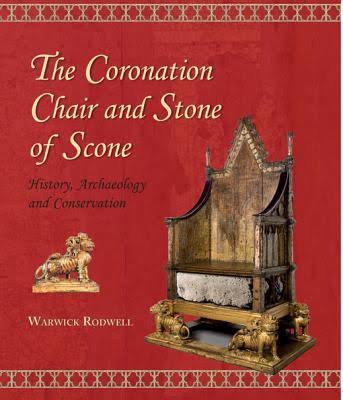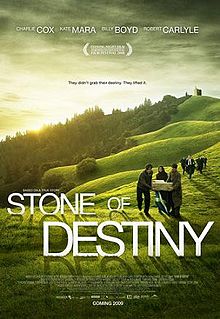The Stone of Scone and the Coronation Chair

“All Crowned English and British Monarchs Have Been Seated in this Chair at the Moment of Coronation”
From Wikipedia:
The high-backed, Gothic-style armchair was carved from oak at some point between the summer of 1297 and March 1300 by the carpenter Walter of Durham.n At first, the king ordered for the chair to be made of bronze, but he changed his mind and decided it should be made of timber. The chair is the oldest dated piece of English furniture made by a known artist. Since the 14th century, all crowned English and British monarchs have been seated in this chair at the moment of coronation, with the exception of Queen Mary II, who was crowned on a copy of the chair. Monarchs used to sit on the Stone of Scone itself until a wooden platform was added in the 17th century.
Gilded lions added in the 16th century form the legs to the chair; they were all replaced in 1727. One of the four lions was given a new head for George IV’s coronation in 1821. The chair itself was originally gilded, painted and inlaid with glass mosaics, traces of which can still be seen upon close inspection of the chair, especially on the back where outlines of foliage, birds and animals have managed to survive.
In the 18th century, tourists could sit on the chair for a small payment to one of the vergers. Early tourists and choirboys of the abbey carved their initials and other graffiti into the chair, and the corner posts have been acutely damaged by souvenir hunters.
At 5:40 pm on 11 June 1914, the chair was the object of a bomb attack thought to have been organised by the Suffragettes. A corner of the chair was broken off in the explosion. Although it was strong enough to shake the abbey walls and loud enough to be heard from inside the Houses of Parliament, none of the 70 people in the abbey at the time were injured, and the Coronation Chair was faithfully restored.
Over the eight centuries of its existence the chair has only been removed from Westminster Abbey twice. The first time was for the ceremony in Westminster Hall when Oliver Cromwell was inducted as Lord Protector of the Commonwealth of England, and the second during World War II when it was moved to Gloucester Cathedral for the duration of the war. On Christmas Day 1950, Scottish Nationalists broke into the abbey and stole the Stone of Scone. It was recovered in time for Queen Elizabeth II’s coronation in 1953. Since 1996, it has been kept at Edinburgh Castle in Scotland on the proviso that it be returned to England for use at coronations.
Film: The Stone of Destiny

